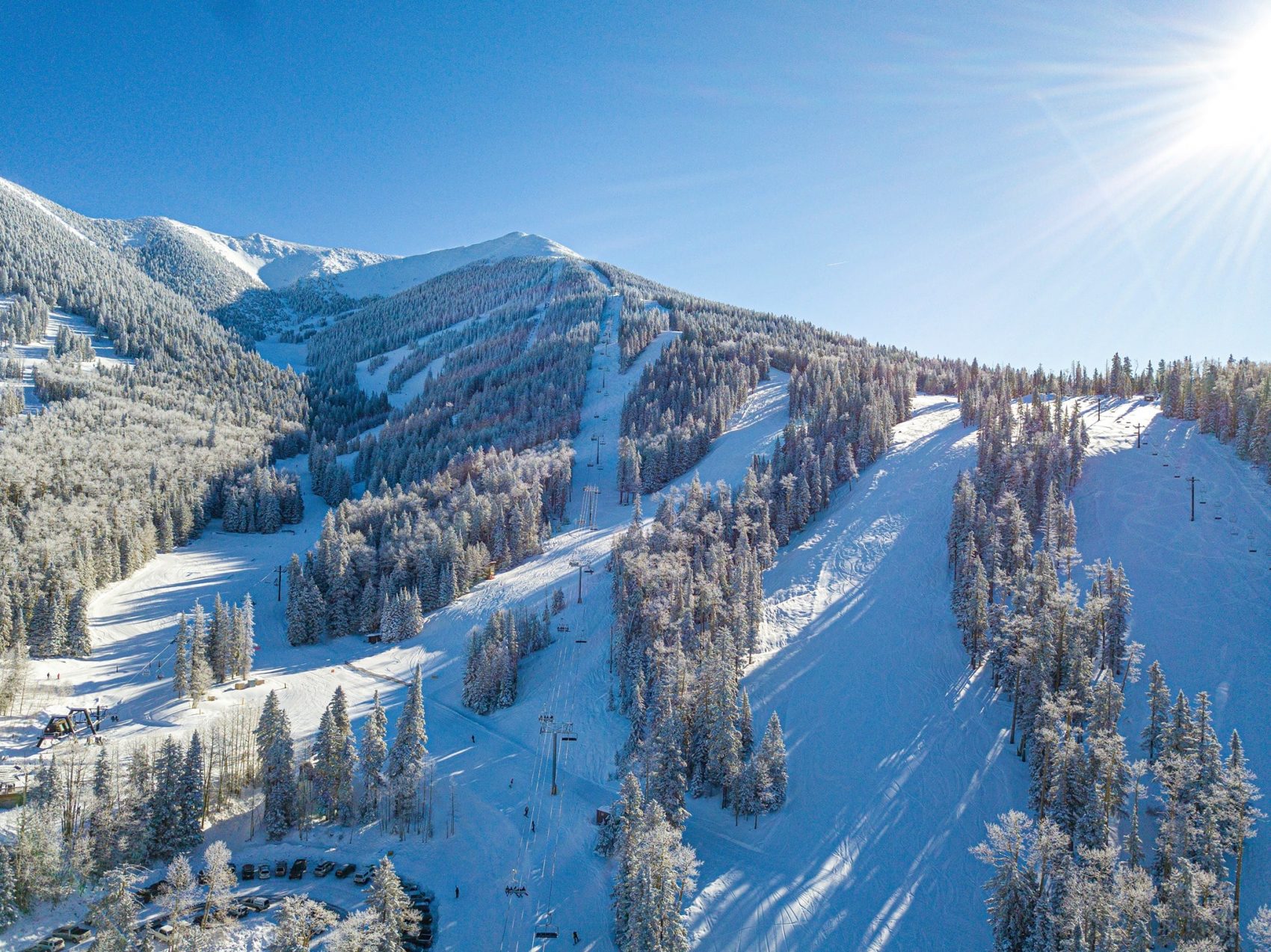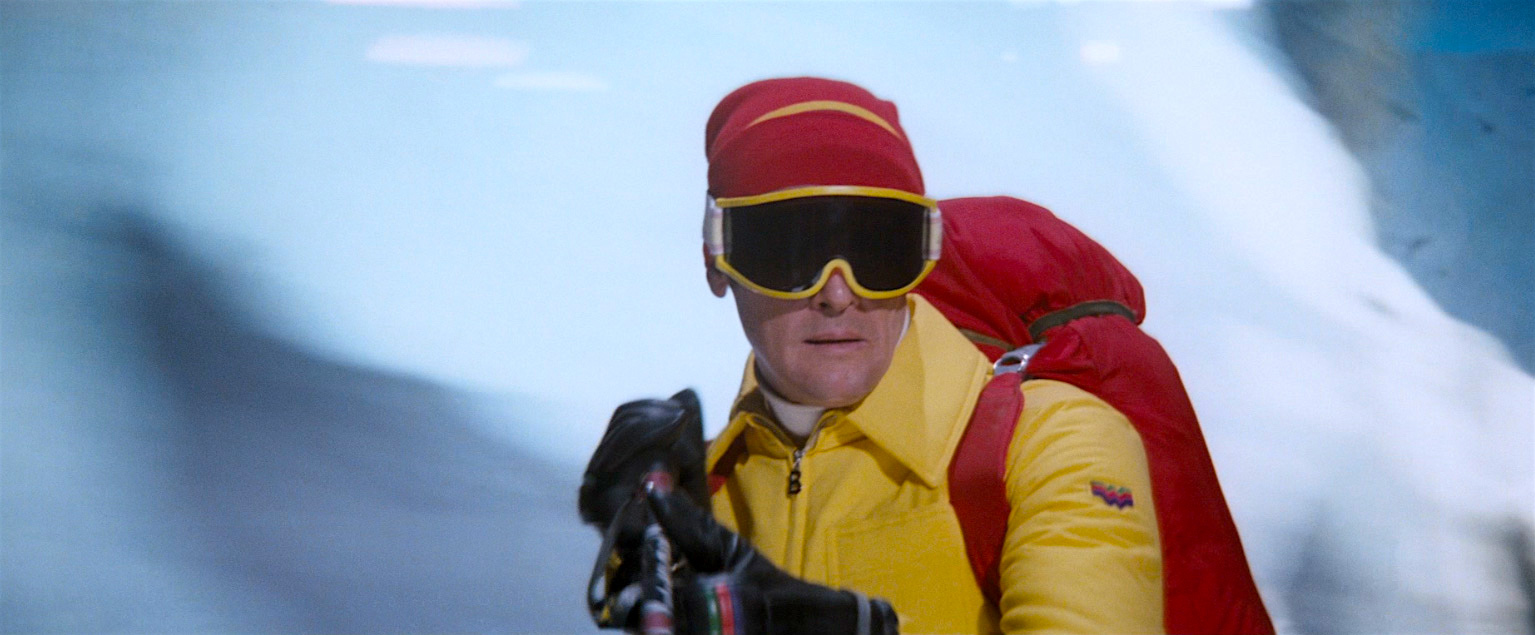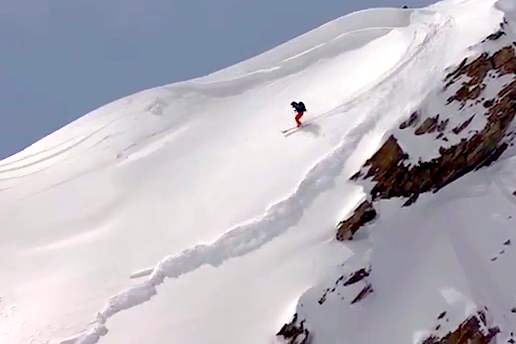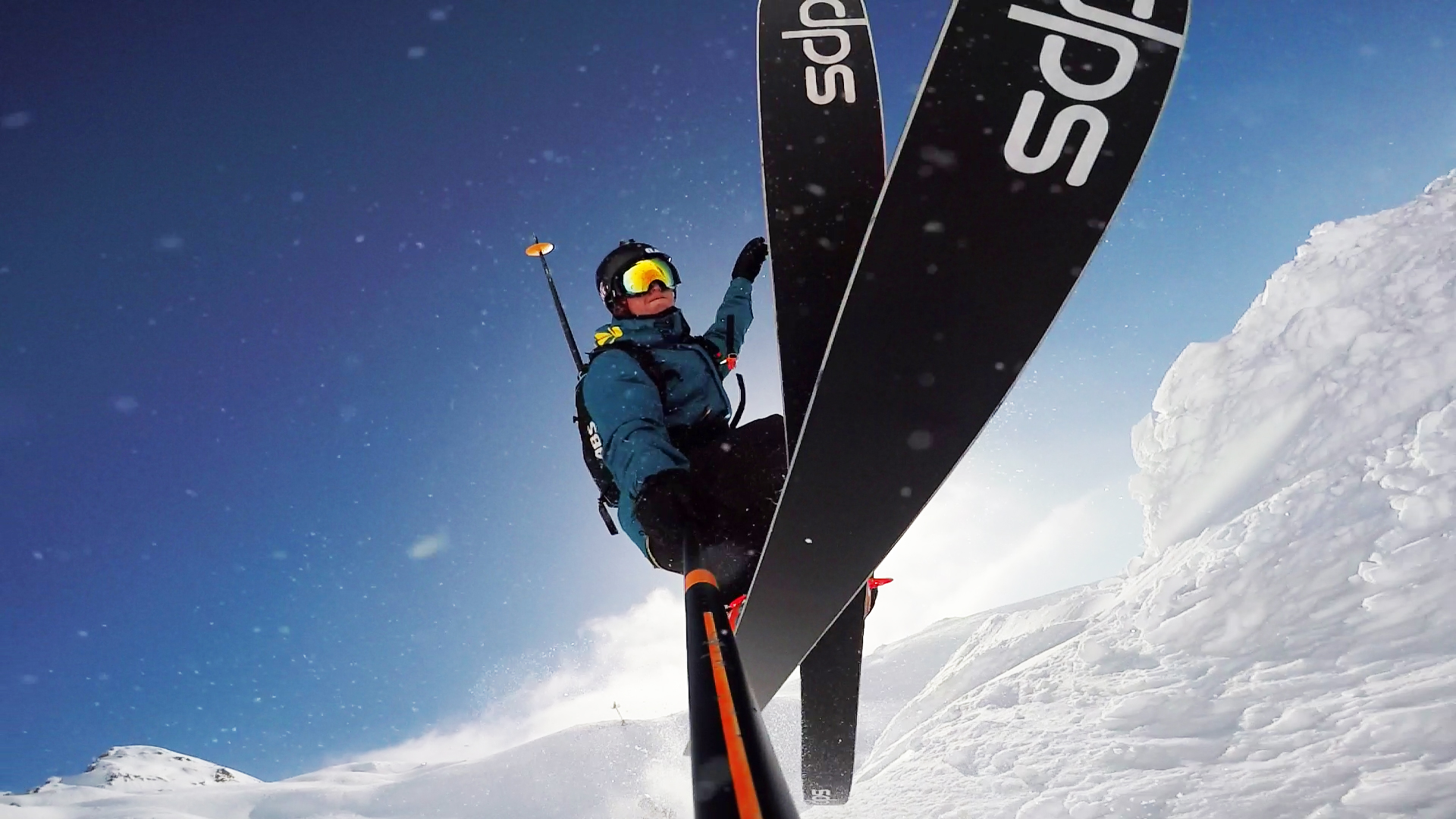Fif-teen minutes. That’s approximately how long you get as an avalanche burial victim before your chance of survival falls to roughly 40%. After that, it accelerates toward zero. And that’s given that you’re wearing your avalanche transceiver and that it’s functioning properly.
Avalanche transceivers have two primary functions: to locate your buried buddy laying there helplessly under avalanche debris — or to help them locate you as you’re laying there, utterly helpless under literal tons of snow that have a medusa-like effect on your entire body. You can’t move, you can’t speak—you can hardly blink because of the snow that has uninvitedly entered through every orifice of your body, jamming itself down your throat, in your eyes, and up your nose.
At this point in an avalanche accident, your life is in the hands of those you were touring with before you went for the big ride. Proper avalanche rescue knowledge is crucial when it comes to extracting a human being from underneath an avalanche. So is having proper, functional avalanche safety gear. These are the factors that determine whether you get to call your family yourself to tell them what happened today, or a buddy has to do it on your behalf.
In recent weeks a social-media firestorm has been set ablaze as several pro skiers and ski industry professionals have come out claiming that the Pieps DSP Pro and DSP sport avalanche transceivers have a fundamental design flaw that is inherently dangerous. And these folks have good reason to believe so. But is it faulty?
Professional skier Nick McNutt was caught and buried by an avalanche in the Pemberton, British Columbia backcountry in March 2020 that shattered his arm and left him helplessly buried under several feet of snow for roughly five minutes. He couldn’t move but knew he was in good hands as he was riding with trained avalanche professionals that day that were able to rescue him with lightning-fast efficiency. But little did he know that his Pieps DSP Pro transceiver had turned off in the avalanche and that his buddies were probing blind. McNutt said in a phone interview with SnowBrains that,
“My transceiver was on that day and it was functioning correctly so I assumed that they were going to be on top of me and acquiring a signal immediately but it obviously didn’t go that way.”
McNutt said that after the fact, he and his teammates inspected his beacon, finding it to work like normal without any clear signs of damage or cracking to the transceiver’s locking mechanism, which has become the design feature of concern. He sent in his transceiver to Pieps for a routine inspection, but it was lost in the mail at the start of the pandemic. McNutt and his teammates that day have spoken out saying that there is a design flaw with this transceiver and that it should be addressed by Pieps and fixed in order to prevent future accidents. They began what has become a seven-month-long and ongoing conversation with Black Diamond (a sister company with Pieps owned by the Clarus Corporation) about the transceiver’s locking mechanism.
To read the exact order of events on that fateful spring powder day, check out the string of Instagram posts below published by ACMG certified ski guide Christina Lustenberg who was one of the skiers that helped rescue McNutt.
The skiers there that day—Nick McNutt, Ian McIntosh, Christina Lustenberger—are saying that that the locking mechanism on the Pieps DSP Sport and Pro avalanche transceivers are inherently faulty and that the transceivers should be recalled. They’ve also said that they have absolutely no intention of slandering Pieps’ name and have wanted to take “the high road,” when it came to getting to the bottom of this potential design flaw with the transceiver. That’s why they started the initial conversation with Pieps in private. Since March, they’ve been in constant communication with Black Diamond’s Vice President of Quality Rick Vance along with other company heads. However, after months of conversating with Black Diamond and gaining what the skiers claim as “little progress,” the three took to social media to address the issue.
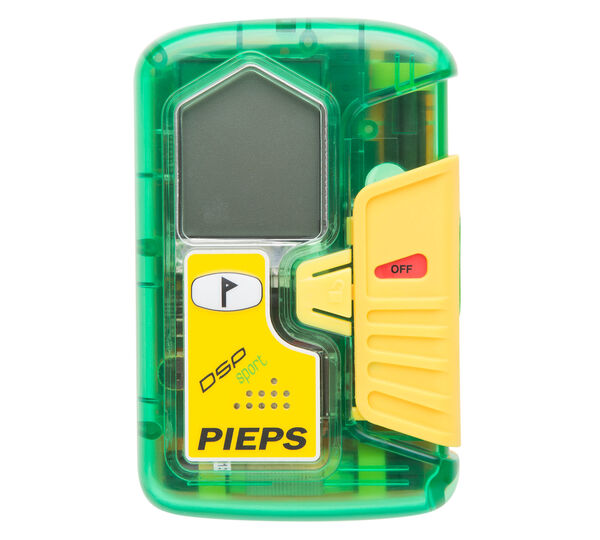
But let’s hold on just one second—we’ll come back to McNutt’s case a little later in this story, along with Black Diamond’s official responses to their claims about the allegedly faulty locking mechanism. Because this story actually goes back further than last March to three Marches ago in March 2017—to Hanging Lake, British Columbia.
Backcountry skier Corey Lynam’s Pieps DSP avalanche transceiver was found in the ‘search’ position when rescuers recovered his lifeless body near Hanging Lake in BC. They were horrified—not only because they had lost a good friend, mountain expert, and father—but because they had performed a beacon check before ascending towards their objective that day which showed that Corey’s beacon was operating correctly before he got caught in the avalanche. Yet, after four hours of digging for their friend, they had found his transceiver had switched modes, increasing his burial time by hours and not minutes, according to Corey’s wife Bri, who had just become a widowed mother of a 17-month-old son at the time. She spoke with SnowBrains in a phone interview and gave us the rundown of that traumatizing day.
“My husband set out that day with four other skiers in their group. He was a very advanced skier, regularly putting in 20-30 days in the backcountry a season. Both he and everyone in the group had completed avalanche safety courses prior, and they did a transceiver check in the parking lot that morning before they went out to make sure that all of their transceivers were working properly. Then when they went down to their run, Corey was the second or third person to go and a slide was triggered when he went, catching him in it. The group immediately flipped their transceivers from transmit to search mode and couldn’t get a signal. And that’s when they realized something had happened with his beacon, either that it wasn’t working or that it had gotten broken. They could not get a signal.”
Howard said that it took 40+ rescuers over four hours to locate her husband and that it was an avalanche rescue dog that had eventually located his body.
Bri Howard spent the subsequent weeks and months trying to piece together what had happened. She told SnowBrains that she examined her late husband’s Pieps DSP transceiver but found no apparent signs of cracking or damage.
“The beacon itself had no cracks—it wasn’t broken originally,” Howard said. “There were reports that it must have broken in the avalanche, but I have it and it’s fully functioning—it has no cracks. We tried to figure out if it was a possible user error, but we know now that wasn’t the case because Corey and his touring partners had conducted a beacon check before he was caught, showing the beacon to be working.”
After her husband’s death, Howard began looking up product reviews for the Pieps DSP transceiver models and found some “interesting anecdotes” about how several users had reported that the locking mechanism “was easy to move unintentionally.”
“In a lot of reviews I saw, there were a lot of anecdotes from people saying things like ‘it seems like the slider switch moves easily,’ or ‘it was in my pocket or backpack and it switched modes,” Howard said. “It really became clear to me from reading these reviews that this is a design flaw, that obviously Corey’s accident wasn’t a one-off. If a beacon’s locking mechanism can easily slide when you’re touring then there’s no way it can withstand an avalanche.”
Black Diamond soon came in communication with Bri Howard and the Royal Canadian Mountain Police in an official investigation about the avalanche incident. The condition of Corey Lynam’s transceiver was immediately put in question. SnowBrains spoke with two company executives: Rick Vance, who’s the Director of Quality at Black Diamond, and Jerry Hicks, who’s the Pieps North American sales and Marketing Manager, on a Zoom call to hear the company’s side of the story regarding the transceiver.
Vance elaborated that all avalanche transceivers are certified to a European standard call TUV, which is a third-party product and service notified body that is completely independent of Black Diamond. According to Vance, Howard’s beacon was investigated by TUV, which is not the product notified body that Black Diamond uses, and passed all the standard safety tests—meaning that it was not faulty.
“TUV found that transceiver to be operational in meeting the standards that it’s certified to,” Vance said.
Vance went on to outline how the avalanche incident that claimed Howard’s life happened near Whistler, BC which is in the same community as McNutt.
“Fast forward to March of this year, we were contacted by Nick immediately and started to work with Nick. The investigation in 2017 revolved around questions of whether or not the slider was interfered with or changed positions inadvertently. Nick raised the same question out of his accident earlier this year. And anytime we have a claim of a product not functioning as intended, we investigate.”
He described this investigation process in detail:
“Typically the first step in that investigation is to speak to the people involved and then get the product back for inspection and testing. In this case, unfortunately, Nick’s transceiver was lost by UPS. This was the beginning of COVID, people were concerned with handling packages, shipping shut down, people were out of work—long-story-short the tracking information has Nick’s transceiver arriving in Salt Lake but never being delivered to Black Diamond. We tried to track it down for months but unfortunately that’s kind of a missing link in our story. Nonetheless, we launched several rounds of testing to try to determine if there is a defect with this slider mechanism.”
According to Vance, the first round of mechanical testing in the lab was purposed to look for any indications that beacons of similar age to Nick’s we’re seeing a decrease in what we call “switch resistance.” When Black Diamond tests for this, they try to override the lock button, looking for a decrease in the strength of that switch resistance over time. Vance said that they pulled a sample of beacons from Black Diamond’s warranty department that had been returned for electronics issues of similar age to Nicks, from a range of about three to six-year-old, respectively.
“The first test is to pull on the slider and verify that the switch resistance is either within the acceptable range or decreased over time,” Vance said. “And by the way, the reason we use warrantied beacons and not new beacons is because these beacons have been used—these weren’t new beacons out of the box. The results of that test show that we don’t see a decrease over time of the switch with what we would call ‘normal use.'”
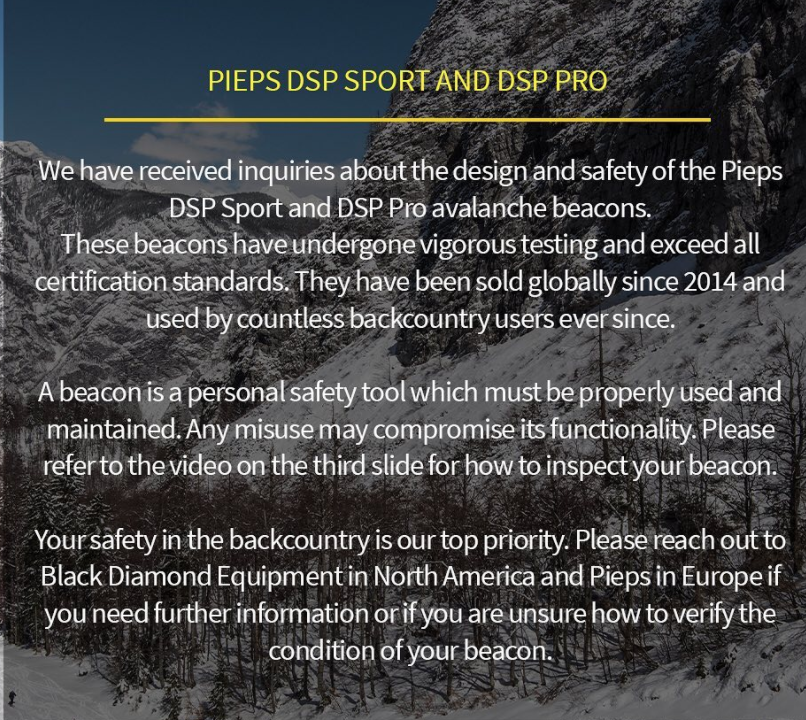
Vance said that this development is an important point for the next round of testing which was designated “to test the decrease in switch resistance if the locking button is damaged.” They did this because Nick returned a beacon that he said was in a similar condition to his (the one that was lost in the mail) in terms of age and overall condition and, according to Vance, that beacon had a cracked lock button. They tested that beacon and others with similar damage to the locking buttons and that’s when they found that there was an apparent decrease in switch resistance associated with cracked locking buttons.
This is why Black Diamond launched the video that shows how to inspect for a crack on the lock button of the Pieps DSP transceiver models and the intentional override of the sliding mechanism, according to Vance. The video is attached below.
But with news being shared that the locking mechanism on the transceiver can be forcefully overridden, people were testing their beacons by seeing if they could override that slider mechanism, which actually damages the beacon’s lock button, Vance said.
“We felt this was an important message to get out early,” Vance said. “Don’t intentionally damage your lock button. Another reason we [shared the video] is that Nick returned four other beacons to us that had already been forcefully overridden and we wanted to stop folks from damaging their beacons and decreasing the strength of their sliders and lock mechanisms by trying to test it themselves. We found a significant decrease in switch resistance when that lock button has been damaged in some way and, coincidentally, by repeatedly overriding the lock button, you can damage it. We wanted to make sure people weren’t damaging their beacons and decreasing the security of that switch by testing it themselves. That’s not the proper test to ensure that your lock switch is working correctly.”
When asked bluntly if the design on the Pieps DSP transceivers is faulty, Vance responded confidently that “the design is not faulty.“ Vance then compared the design of the DSP to other transceivers on the market, saying that the beacon passes the certified safety standards that are required for all transceivers to pass before they can put for sale.
“This beacon is comparable or equivalent to other designs on the market in terms of its mechanical security,” Vance said. “The purpose of this study is to compare our mechanical system to the state of the art on the market, to verify that this design is equivalent in what we see in other beacon designs. And the answer there is yes.”
Hicks also chimed in at this point by mentioning how the company is still thinking about what’s next, and how they can improve both their products and the industry as a whole.
“The comparative study is ongoing because it’s an opportunity for us to learn more about where we’re currently at as an industry what we can do to improve as an industry,” Hicks said.
There is also a big difference between lab and real-life use, and Black Diamond acknowledged this in the interview. Vance said:
“In the lab, we know that switch will last many thousands of cycles if we push on it over and over again. It will survive about a thousand cycles of overriding it before it cracks. Now that’s a lab testing environment. If you drop it on the parking lot on a super cold day it could happen more quickly, or if some combinations of factors come together to create that crack over time. From a product design standpoint, we believe it has sufficient cycle life and is sufficiently strong. We also want to strongly encourage people to inspect their beacons for damage themselves.”
This kind of self-inspection Vance described is exactly what Ryan Wichelns, a freelance writer with Ski Magazine, shared a video about with his own Pieps DSP Sport transceiver. The results of his inspection are what he describes as a “real problem.” His video is attached below.
Not everybody is satisfied with Black Diamond’s response video, either, and many—like professional skier Ian McIntosh who was there with Nick the day he was almost killed—want to see more action from Black Diamond/Peips, specifically a recall. McIntosh commented on a social media post:
“After almost losing my friend to the failure of this transceiver I would say this is not enough. The lock mechanism is a poor design and is very prone to failure. You guys were given a chance to do right and recall this device, I would say that in the long run, this would have been the smart move. Now people are going to straight-up boycott Peips. You guys make great transceivers but this particular lock mechanism is garbage. Now you will turn people away from ever being a customer again. This is on you! Safety equipment should not be prone to failure.”
McIntosh later published a video on Instagram to detail his intentions by insisting on a recall of Pieps DSP transceivers and to clear up any confusion about the subject in which he said:
“We are not trying to slander—myself and the whole crew that was involved in Nick McNutt’s accident—none of us are trying to slander Pieps or Black Diamond. That is not our motivation here. Our motivation is simply the safety of all backcountry travellers.”
Here’s that video:
According to McIntosh, a class action lawsuit has been filed in Britsh Columbia against Black Diamond but neither he nor his crew has anything to do with it. All they want to do is have the product recalled because they “know that it is faulty, ” McIntosh said in the video.
McIntosh—like McNutt, and like Bri Howard—have stepped into the social media spotlight because they want to raise awareness towards the alleged danger associated with this transceiver. They want a recall because they don’t want anybody to have to go through even an iota of what they had to go through. Meanwhile, Black Diamond and Pieps are continuing their investigation of the transceivers, which—up until this point—has yet to provide conclusive evidence that a recall is mandatory.
Yet, before any sort of conclusion can be drawn, the reader should note that it’s extremely easy to adopt a sort of “us and them” attitude towards the entire discussion that’s taking place. This way of thinking won’t help anyone because it doesn’t promote growth in an industry that’s built on people who share a love for the same thing. Jerry Hicks stressed this as much as he could, saying that he thinks it’s easy for people to picture himself and his colleagues at Black Diamond as a gang of corporate zombies hiding behind computer screens, which just isn’t true. He and his team are “trying super hard to find the right resolution but within a construct that is objective and that’s understood,” he said.
“It seems like there are two sides of this discussion: the “Nick” side and the “us” side—but this is not the case that we view,” Hicks said. “Maybe the conclusions are slightly different but we are very appreciative of the intent and the impetus put on improving safety. We appreciate that very much and we’re going to continue working on that and ideally, this has created a conversation that will accelerate that into the next generation of design and standards that will make everybody safer. I hope out of all of this we’re smarter and people are safer in the backcountry.”
That’s the goal of this whole discussion—to grow in a positive way that promotes safe backcountry use, even though both sides may differ slightly on how exactly that is going to happen. When asked what she hoped to gain from all this, Bri Howard said:
“I just want to bring awareness. Ultimately, I want Pieps and Black Diamond to recall this beacon. I think it should not be available for sale. I hate the idea of someone else going through what I did. It’s the worst possible scenario you could ever have. My reason for coming forward now, again, is to show it’s a serious liability—especially after speaking with Nick McNutt after his accident and us both trying individually to put pressure on Black Diamond and Pieps and it not going anywhere. [This ski season] is going to be the busiest on record and there will be avalanches, as there are every year. But because there are going to be more people out there than ever before I think it should be recalled.”


